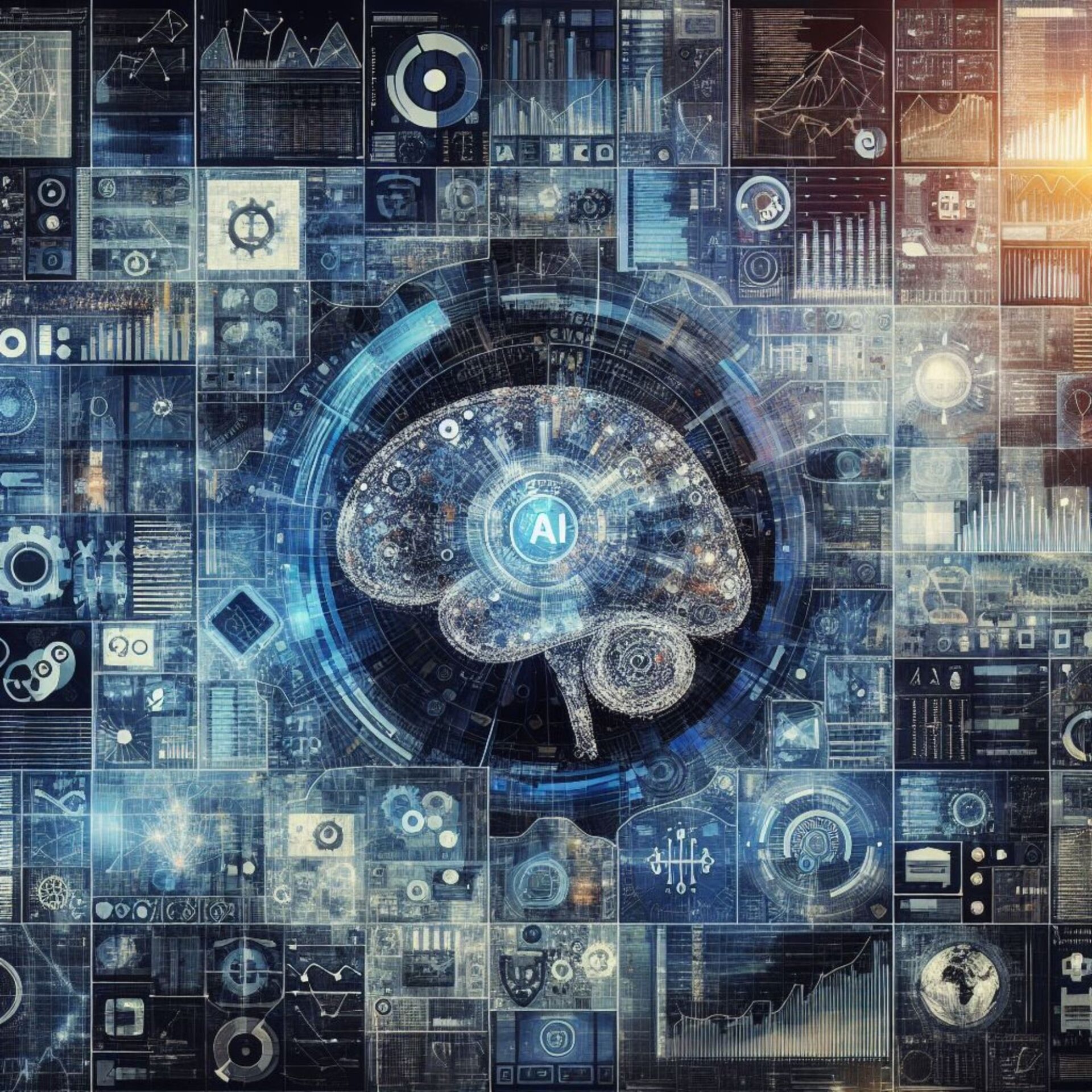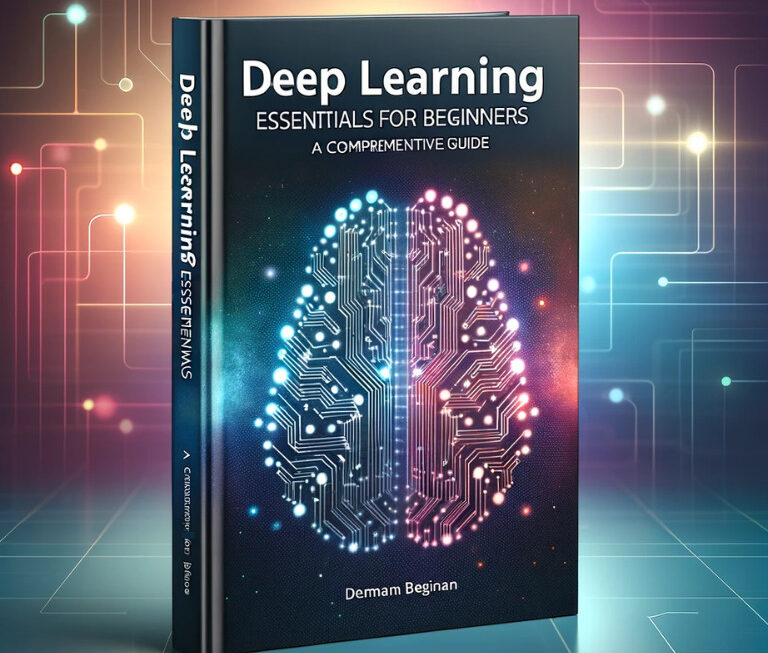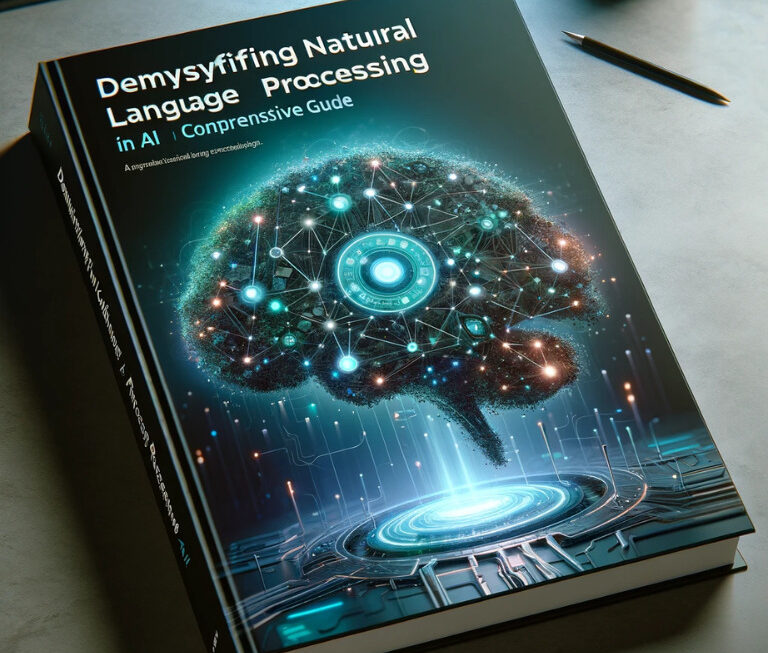In the digital age, data is the new oil. It fuels decision-making processes, drives business strategies, and empowers organizations to stay competitive. However, the sheer volume of data generated every day, known as Big Data, can be overwhelming. This is where Artificial Intelligence (AI) comes into play. AI and Big Data are two sides of the same coin. They complement each other, with AI providing the means to extract value from Big Data, and Big Data offering the information necessary for AI to learn and improve. Together, they are revolutionizing the way we integrate and analyze large datasets.
The integration of AI and Big Data is not just about handling large volumes of data. It’s about making sense of that data and using it to make informed decisions. It’s about finding patterns and trends that would otherwise go unnoticed. It’s about turning raw data into actionable insights. In this article, we will delve into the world of AI and Big Data, exploring their definitions, their synergistic relationship, their practical applications, and their future. We will also discuss how AI enhances Big Data analytics and how they can be used for predictive analysis.
Understanding AI and Big Data
Artificial Intelligence (AI) and Big Data are two technological phenomena that have significantly impacted the digital landscape. To fully grasp their synergy, it’s crucial to understand what they are individually.
Artificial Intelligence (AI)
Artificial Intelligence is a multidisciplinary field that combines elements from computer science, mathematics, cognitive psychology, and neuroscience, among others. Its goal is to create systems capable of performing tasks that would normally require human intelligence. These tasks include learning from experience, understanding natural language, recognizing patterns, and making decisions.
AI can be classified into two main types:
- Narrow AI: These are systems designed to perform a specific task such as voice recognition or image recognition. They operate under a limited set of constraints and are only as intelligent as the specific task they are programmed to do. Examples include Siri, Amazon’s Alexa, and Google Assistant.
- General AI: These are systems that possess the ability to perform any intellectual task that a human being can do. They can understand, learn, adapt, and implement knowledge in a wide range of tasks. However, this type of AI exists currently only in theory and research and not in practical applications.
Big Data
Big Data refers to datasets that are so large and complex that traditional data processing software is inadequate to deal with them. These datasets are generated by global digital processes and their size is usually beyond the ability of typical database software tools to capture, store, manage, and analyze.
The characteristics of Big Data are often referred to as the 4 Vs:
- Volume: The sheer amount of data generated every second is massive and continues to grow. For instance, social media platforms, IoT devices, transaction records, etc., all contribute to the volume.
- Variety: Data comes in various formats – from structured data like databases and spreadsheets to unstructured data like emails, videos, audios, text documents, etc.
- Velocity: This refers to the speed at which new data is generated and the pace at which it moves. With the advent of real-time data streams, data is being generated fast and needs to be processed in a timely manner.
- Veracity: This refers to the quality, credibility, and accuracy of the data. Given the volume and variety, it’s crucial that the data being analyzed is accurate, reliable, and can be trusted.
The Synergistic Relationship between AI and Big Data

The integration of AI and Big Data is a powerful combination that has the potential to revolutionize various sectors. The synergy between these two technologies lies in their complementary nature – AI provides the means to extract value from Big Data, and Big Data offers the information necessary for AI to learn and improve.
AI as the Key to Unlocking Big Data
AI, particularly Machine Learning (ML), is capable of processing and analyzing large amounts of data quickly and accurately. For instance, research indicates that a combination of AI and Big Data can automate nearly 80% of all physical work, 70% of data processing work, and 64% of data collection tasks.
AI algorithms can handle the variety of Big Data, processing different types of data from structured databases to unstructured social media posts or images. This ability allows AI to extract more meaningful and valuable insights from Big Data.
Big Data as the Fuel for AI
Big Data provides the vast amount of high-quality data that AI systems need to learn and improve. The world has 94 zettabytes of data as of 2022, providing a rich source of information for AI to train on.
The more data an AI system has, the better it can learn and the more accurate its predictions and decisions will be. This is particularly true for ML algorithms, which improve with experience.
The Impact of AI and Big Data
The integration of AI and Big Data is driving advancements in various fields and shaping the future of data analysis and decision-making. The AI market size is expected to reach $407 billion by 2027, and AI is expected to contribute a significant 21% net increase to the United States GDP by 2030.
Moreover, the value of the big data analytics market is expected to reach over 655 billion U.S. dollars by 2029, up from around 241 billion in 2021.
Practical Applications of AI and Big Data
The integration of AI and Big Data is not just a theoretical concept; it’s a practical reality that’s transforming various industries. Here are some real-world examples:
Healthcare
In healthcare, AI and Big Data are used to predict disease outbreaks, improve patient care, and accelerate biomedical research. For instance, AI algorithms can analyze large datasets of patient records to identify patterns and predict disease risks. Big Data is also used in genomics to analyze large volumes of DNA sequence data.
Finance
In the finance sector, AI and Big Data are used for risk assessment, fraud detection, and investment prediction. Banks and financial institutions use AI algorithms to analyze large datasets of financial transactions to identify fraudulent activities. Big Data analytics is also used to predict market trends and make investment decisions.
Transportation
In the transportation industry, AI and Big Data are used to optimize routes, predict maintenance needs, and improve safety. For instance, logistics companies use AI and Big Data to analyze traffic data and optimize delivery routes. Airlines use Big Data analytics to predict maintenance needs and prevent equipment failures.
Retail
In the retail sector, AI and Big Data are used for personalized marketing, inventory management, and sales prediction. Retailers use AI algorithms to analyze customer data and provide personalized product recommendations. Big Data analytics is also used to predict sales trends and manage inventory.
The Role of AI in Big Data Analytics

AI plays a pivotal role in Big Data analytics, providing the tools and techniques needed to process, analyze, and extract valuable insights from large datasets. Here’s how:
Data Processing
AI, particularly Machine Learning (ML) algorithms, are capable of processing vast amounts of data quickly and accurately. They can handle both structured and unstructured data, making sense of the variety in Big Data. This ability to process different types of data allows AI to extract more meaningful and valuable insights from Big Data.
Pattern Recognition
One of the key strengths of AI is its ability to recognize patterns in data. ML algorithms can identify patterns and trends in large datasets that would be impossible for humans to detect. This pattern recognition capability is particularly useful in Big Data analytics, where the data is too vast for manual analysis.
Predictive Analysis
AI is also used in predictive analysis, where it uses historical data to predict future trends. This is particularly useful in sectors like finance and healthcare, where accurate predictions can lead to better decision-making.
Real-time Analysis
With the velocity of Big Data, real-time analysis is often necessary. AI can analyze data in real-time, providing instant insights and enabling immediate decision-making. This is particularly useful in sectors like transportation and logistics, where real-time data analysis can lead to significant efficiency improvements.
Data Visualization
AI can also help in data visualization, presenting complex data in a more understandable and visually appealing format. This can help stakeholders understand the insights derived from Big Data analytics more easily.
Predictive Analysis with AI and Big Data
Predictive analysis is a powerful application of AI and Big Data. It involves using historical data to predict future events or trends. This is particularly useful in sectors like finance, healthcare, and marketing, where accurate predictions can lead to better decision-making.
Predictive Analysis in Finance
In the finance sector, predictive analysis is used for risk assessment, investment prediction, and fraud detection. For instance, banks and financial institutions use AI algorithms to analyze large datasets of financial transactions to identify patterns that could indicate fraudulent activities. Similarly, investment firms use predictive analysis to forecast market trends and make informed investment decisions.
Predictive Analysis in Healthcare
In healthcare, predictive analysis is used to predict disease outbreaks, improve patient care, and accelerate biomedical research. For instance, AI algorithms can analyze large datasets of patient records to identify patterns and predict disease risks. This can help healthcare providers to intervene early and improve patient outcomes.
Predictive Analysis in Marketing
In marketing, predictive analysis is used for personalized marketing, sales prediction, and customer segmentation. Marketers use AI algorithms to analyze customer data and predict their buying behaviors. This can help businesses to target their marketing efforts more effectively and improve their sales performance.
Conclusion
In this article, we have explored the fascinating interplay between Artificial Intelligence (AI) and Big Data, two technological phenomena that are shaping the future of data analysis and decision-making processes in various industries.
We began by understanding the individual concepts of AI and Big Data, followed by an examination of their synergistic relationship. We then delved into the practical applications of AI and Big Data in sectors like healthcare, finance, transportation, and retail. We also discussed the role of AI in Big Data analytics and how it enhances the efficiency and accuracy of data analysis.
Furthermore, we explored the concept of predictive analysis with AI and Big Data, a powerful tool for making informed decisions and predicting future trends. Finally, we looked ahead to the future of AI and Big Data, discussing potential advancements, increased adoption, ethical and regulatory considerations, and new opportunities and challenges.




